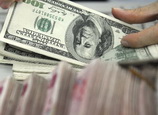
China's reform and opening-up since the early 1980s has released some of the country's huge potential for economic growth and successfully transformed a highly concentrated planned economy into a socialist market economy with great vitality; the government's macro-control playing an important role in optimizing the use of various resources.
Reform and opening-up coincided with changes in the global industrial and labor distribution systems, as manufacturing industries, the production chains of some high-tech and new industries, and some lower-end service sectors of the developed countries moved to developing countries during this period. China became the main destination for this global industrial relocation.
China's export-oriented development strategies also increased the efficiency of its development based on foreign investment and promoted its integration into the global market.
However, the growth model driven by the dividends from huge inputs and low labor costs is now coming to an end, and the impact of the global financial crisis and the ongoing debt crisis in the eurozone have forced China to accelerate the transformation of a growth model driven by exports and investment to one that is driven by consumption.
If China can double its average personal income by 2020, about 64 trillion yuan ($10.2 trillion) will be released and China will become a large consumer market with the potential to be a new driver for global economic growth. This would also enable a rebalancing of the global economy, as China would be consuming more, while developed countries would be saving more.


















 Underground voices:grassroots singer in subway
Underground voices:grassroots singer in subway


![]()
